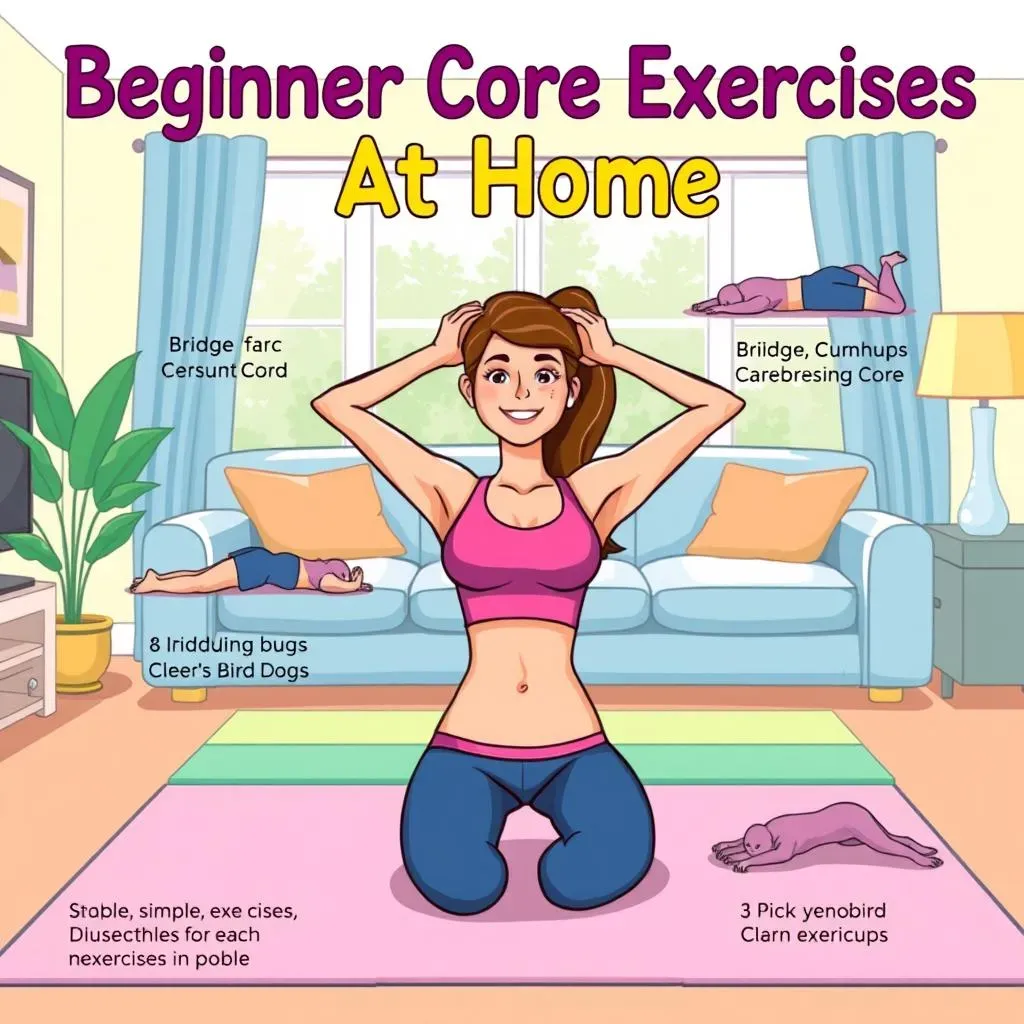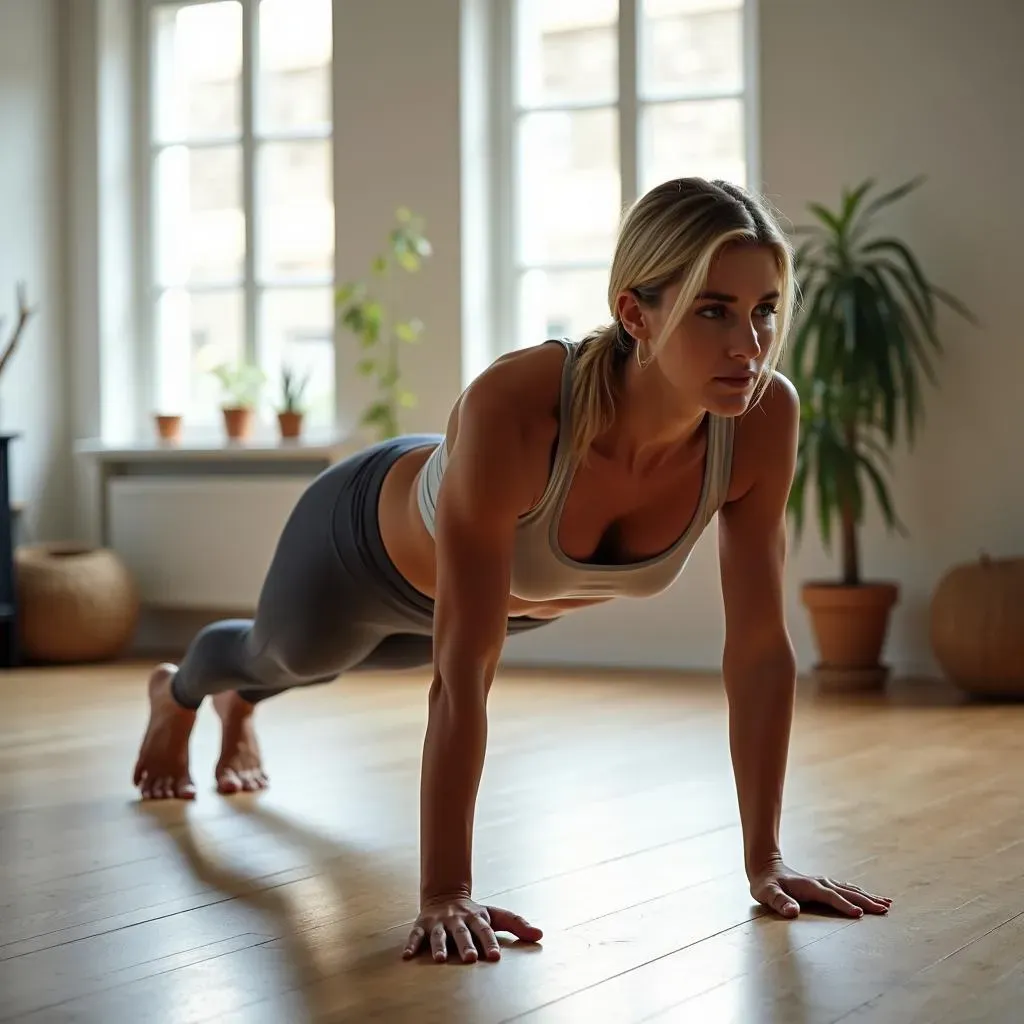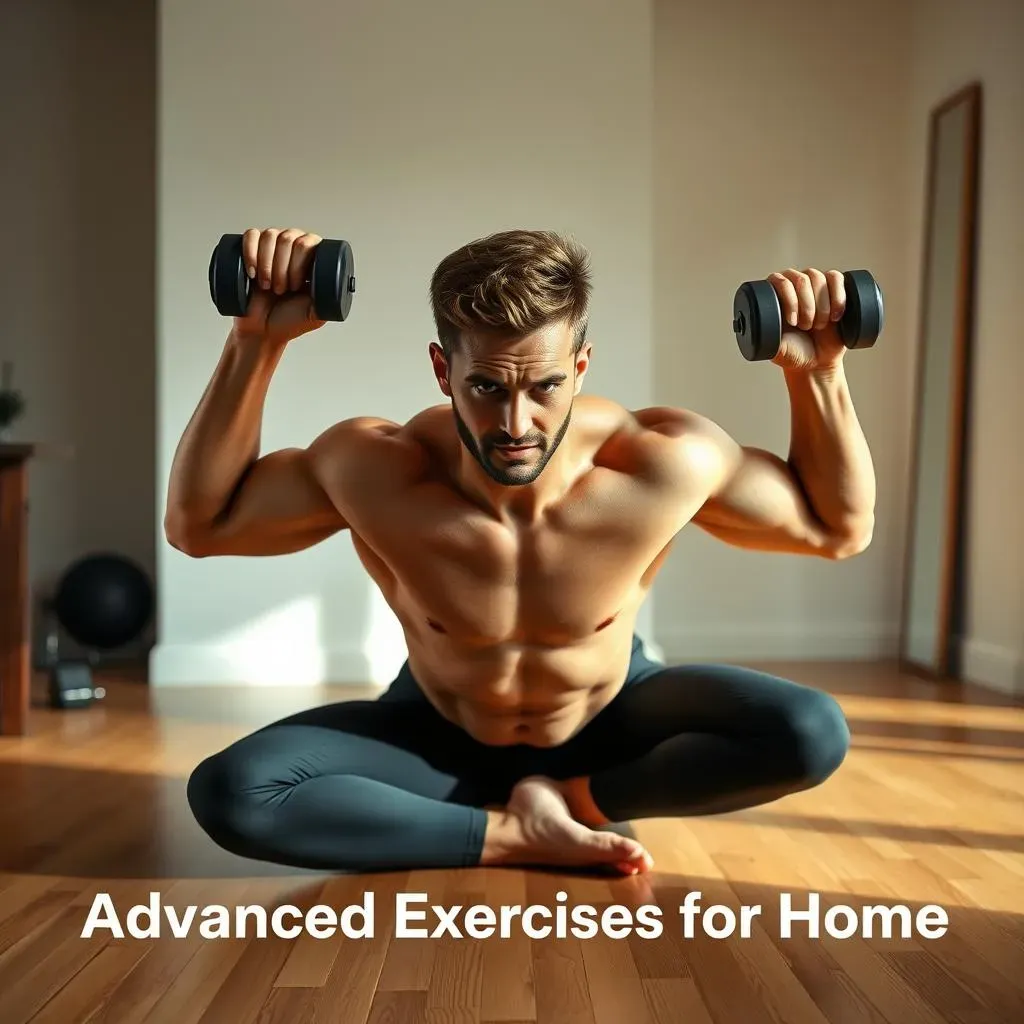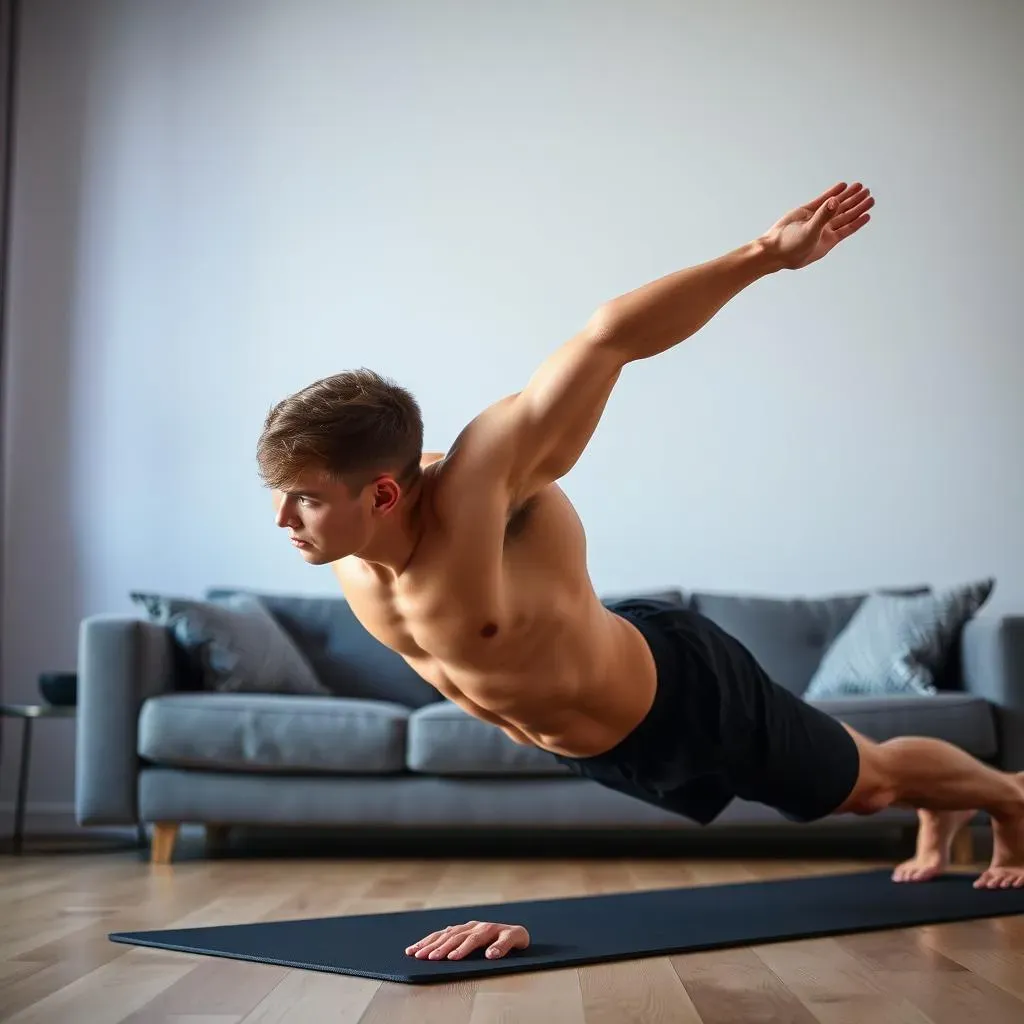Table of Contents
Ready to ditch the gym and sculpt a stronger core from the comfort of your living room? You're not alone! Many of us dream of rock-solid abs and a stable back, but hitting the gym isn't always an option. That's where effective core workouts at home come in. This isn't just about getting a six-pack, it's about building a foundation for better posture, balance, and everyday movement. Forget those endless crunches; we're going to explore a variety of exercises that target all your core muscles – yes, that includes your back and obliques too! We'll start with beginner-friendly moves that anyone can master, then progress to intermediate and advanced challenges for those ready to push their limits. So, whether you're just starting your fitness journey or looking to level up your core game, get ready to discover the power of effective core workouts at home. We will also answer some of the most common questions about core training, so you will have everything you need to succeed.
Beginner Effective Core Workouts at Home

Beginner Effective Core Workouts at Home
The Core Basics
Okay, so you're new to core work, that's totally fine! Think of your core like the sturdy trunk of a tree. It's not just your abs, but the muscles all around your middle, front, back, and sides. It's what helps you stand tall, twist, and even just pick up your groceries. Starting out, we want to get those muscles gently working. We are going to start slow with moves that are easy to get the hang of, and we won't be doing anything too crazy, promise! The goal here is to build a solid foundation, not to feel like you're trying to climb a mountain on day one. We're aiming for strength, not a sore back.
We'll be focusing on exercises that are easy to learn and don't need any fancy equipment, just you and a bit of space. Imagine you're waking up your core muscles, gently encouraging them to get stronger. It is like making friends with your core, getting to know it, and helping it grow. We're going to start with simple moves like bridges, which are basically like a mini-plank but with your back on the floor. Then we'll do some easy crunches, focusing on the right form and engaging the core and not just pulling on your neck and finally some bird dogs, which help with balance and stability. Remember, it's about quality over quantity. We will do those moves with control, and it will be much better than just doing a lot of them incorrectly. This is the beginning of your journey to a stronger core!
Exercise | How to Do It | Why It's Great |
|---|---|---|
Bridges | Lie on your back, knees bent, lift hips up. | Strengthens glutes and lower back. |
Crunches | Lie on your back, knees bent, lift head and shoulders. | Engages abdominal muscles. |
Bird Dogs | Start on hands and knees, extend opposite arm and leg. | Improves balance and core stability. |
Getting Started Safely
Now, before you jump into these exercises, a little chat about safety. Think of it like putting on your seatbelt before a car ride. We want to keep things safe and sound. First, if you have any back issues, it's always a good idea to check with a doctor or physical therapist before starting any new exercise routine. They can give you personalized advice to make sure you're not doing anything that could cause problems. Also, listen to your body. If something hurts, it's a clear signal to stop. It's better to take a break and adjust than to push through pain and get injured. Remember, we want to build strength, not create setbacks.
When you're doing the exercises, focus on keeping your core muscles engaged. Imagine you're gently pulling your belly button towards your spine. That's the feeling you want to maintain throughout each move. This helps to protect your back and makes the exercises more effective. Don't worry about doing a million reps. Start with a few sets of 10-12 repetitions of each exercise, and gradually increase as you get stronger. Consistency is key here. It's better to do a short workout a few times a week than to do one long session once in a while. Think of it like watering a plant – a little bit regularly is much better than a huge flood once a month. We're building a habit, not just a six-pack!
"The key to a strong core isn't about doing endless crunches, it's about consistent, mindful movement that engages the right muscles." - Some Fitness Guy
Intermediate Effective Core Workouts at Home

Intermediate Effective Core Workouts at Home
Stepping Up Your Core Game
Alright, so you've got the basics down, and you're feeling pretty good about those bridges and crunches. Now it's time to crank things up a notch! We are going to move to some intermediate exercises, which means we're going to add a little more challenge and start working those muscles a bit harder. Think of it like leveling up in a video game, you are going to get new moves to play with. We're still sticking with bodyweight exercises, so no need for any fancy gear, just a bit more focus and control. The goal here is to build on that foundation you've created and start engaging your core in more dynamic ways. It is not just about moving, but also controlling the movement. We are going to be working towards a stronger and more functional core.
We are going to introduce planks, which are like the big brother of bridges. Instead of resting your back on the floor, you are going to be holding your body in a straight line. Then, we are going to do some warrior crunches, which are going to challenge your balance and core control at the same time. And finally, we are going to add a twist to the bird dog by bringing your elbow to your knee. These exercises will help you to build strength, stability, and control. We are not just getting stronger, but also more coordinated and balanced. Remember, it is always about quality over quantity. We will focus on doing the exercises with the right form, and we will feel the muscles working.
Exercise | How to Do It | Why It's Great |
|---|---|---|
Planks | Hold a straight line from head to heels, on forearms or hands. | Strengthens entire core, improves stability. |
Warrior Crunches | Stand with feet wide, crunch to one side, alternating sides. | Works obliques, improves core control. |
Bird Dog with Elbow to Knee | Extend opposite arm and leg, bring elbow to knee under body. | Challenges balance, improves core coordination. |
Staying Consistent and Challenging Yourself
Now that you have some new exercises in your routine, it's important to keep pushing yourself while staying consistent. It is like learning a new skill. If you practice it every day, you'll get better at it. But if you do it once in a while, it will take much longer. Try to do your intermediate core workout 3-4 times a week, and always remember to listen to your body. If you need a break, take one. It is much better to take a break than to get injured. Also, it is a good idea to gradually increase the number of repetitions or sets as you get stronger. You can even try to hold your planks for longer periods of time. The goal is to keep challenging your muscles so that they continue to grow and develop. If you find your workout too easy, it’s time to make it a little harder, maybe by adding more reps or sets, or making the movements slower and more controlled.
Also, remember that your core strength is not just about the exercises you are doing. It is also about your overall fitness and nutrition. Eating a balanced diet will give your body the fuel it needs to grow stronger, and getting enough rest will allow your muscles to recover and rebuild. These small things are as important as the exercises you are doing. It is like building a house, you need a solid foundation, strong walls, and a good roof. All of them are important, not just one part. So, remember to take care of yourself, and enjoy the journey to a stronger and healthier you. You are doing great!
"It's not about how much you do, but how well you do it. Quality over quantity every time." - Some Fitness Guru
Advanced Core Exercises for Home

Advanced Core Exercises for Home
Pushing Your Limits
Okay, you've conquered the beginner and intermediate levels, and now you're ready for the big leagues! We're talking about advanced core exercises that will seriously challenge your strength, stability, and control. This is where we start to see real transformations, not just in how you look but also in how you move and feel. We're not just building a core; we're forging a powerhouse. These moves require more focus, coordination, and a higher level of body awareness, so make sure you're comfortable with the previous exercises before jumping in. Think of it like upgrading to a new level in a game, it's going to be harder, but the rewards are even greater. We are not just working out, but also learning to control our bodies in new ways.
We are going to be introducing mountain climbers, which are great for engaging your entire core and getting your heart rate up. Then, we're moving to side planks with rotation, which will challenge your obliques and improve your balance. And finally, we're going to try Turkish get-ups, which are a full-body exercise that will test your core strength and coordination from head to toe. These exercises are not just about building muscles, they are about building a more resilient and functional body. It is about moving with purpose, control, and power. We're not just working out, we're becoming athletes in our own right.
Exercise | How to Do It | Why It's Great |
|---|---|---|
Mountain Climbers | Start in plank, alternate bringing knees to chest. | Full core engagement, improves cardio. |
Side Planks with Rotation | Side plank, rotate torso towards floor. | Works obliques, improves balance. |
Turkish Get-Ups | Start lying down, stand up while holding a weight overhead. | Full body coordination, strengthens core and stability. |
Mastering Advanced Movements
When tackling these advanced exercises, it's crucial to focus on form and control. We're not just trying to get through the reps, we want to do them with precision and intention. For mountain climbers, focus on keeping your core engaged and your back straight. Avoid letting your hips sag or rise too high. For side planks with rotation, ensure you are maintaining a straight line from head to heels while rotating your torso, and don't let your hips drop. And for Turkish get-ups, start with no weight or very light weight, and focus on the sequence of movements. It is all about control, not momentum. We are aiming for quality, not just quantity. If you start to feel any pain or discomfort, it's always better to stop and adjust.
Also, remember that these advanced exercises are not just about strength, they are also about balance, coordination, and body awareness. You might find that some of these moves are more challenging than others, and that's okay! It's all part of the process. The key is to keep practicing and to keep challenging yourself. Don't be afraid to modify the exercises to make them easier or harder. For example, you can do mountain climbers slower, or you can try doing side plank rotations with your feet stacked on top of each other. You can also try to do Turkish get-ups with a heavier weight. It is all about finding what works best for you and your body. And most importantly, remember to have fun! These exercises can be challenging, but they can also be very rewarding. You are doing great things for your body, and you should be proud of yourself.
"Advanced movements aren't about speed or intensity, they're about precision, control, and intention." - Some Fitness Expert
Frequently Asked Questions About Home Core Training

Frequently Asked Questions About Home Core Training
How Often Should I Do Core Workouts?
Okay, so you're fired up to start these core workouts, that's awesome! But, you might be wondering how often you should actually do them. Well, it's not about going all-out every single day. Think of your core muscles like any other muscle group – they need time to rest and recover. Aim for 3-4 core workouts per week, with at least one day of rest in between each session. This gives your muscles the time they need to rebuild and get stronger. It's like giving your plants enough water and sunshine to grow, you can't just drown them every day. Consistency is more important than the frequency. It's better to do 3 good workouts a week than 7 rushed ones.
Also, don't forget to listen to your body. If you're feeling sore or fatigued, take an extra day of rest. It's not about pushing through the pain, it's about working smart and being kind to your body. You're on this journey for the long haul, and consistency beats intensity every time. If you are just starting, you can start with 2 times a week. And as you feel stronger, you can add more days. Remember, it's a marathon, not a sprint. You are doing amazing!
"Consistency is the secret weapon of fitness. It's not about being perfect every day, it's about showing up regularly and doing your best." - Some Fitness Enthusiast
Will Core Workouts Give Me a Six-Pack?
Ah, the million-dollar question! Everyone wants that chiseled six-pack, right? Well, here's the truth: core workouts are crucial for building strong abdominal muscles, but they're only one piece of the puzzle. To actually see those abs, you need to reduce the layer of fat that's covering them. Think of it like having a beautiful painting hidden behind a curtain. You have to pull back the curtain to see it. So, while core exercises are essential, they're not a magic bullet. You have to combine them with a healthy diet and regular cardio to lose body fat.
It is also important to remember that everyone is different and our bodies will respond differently to training. Some people might have an easier time seeing their abs than others, and that's okay. Focus on building a strong and functional core, and don't get too caught up in the visual aspect. It is more important to be healthy and strong than to have a six-pack. You are doing fantastic things for your body, and you should be proud of yourself. It is about being healthy and strong, not just looking good.
Factor | How It Impacts Your Six-Pack |
|---|---|
Core Exercises | Strengthens abdominal muscles. |
Diet | Reduces body fat. |
Cardio | Burns calories and fat. |
What If I Have Back Problems?
This is a really important question! If you have a history of back problems, it's essential to be extra cautious when starting any new exercise routine. It is like walking on thin ice. You want to be careful not to fall in. It's always a good idea to check with your doctor or physical therapist before starting core workouts. They can give you personalized advice and make sure you're not doing anything that could make your back problems worse. They can also recommend specific exercises that are safe and effective for you. It's like having a guide to lead you on the right path. They know what they are doing, so it is always a good idea to listen to them.
When you're doing the exercises, focus on keeping your core muscles engaged and using proper form. Avoid any movements that cause pain or discomfort. Start slowly and gradually increase the intensity as you get stronger. It is better to do less and do it right than to do more and risk getting injured. We are building a foundation, not just trying to get to the top. It's also helpful to listen to your body. If you are feeling pain, take a break. It's always better to be safe than sorry. You are the one that knows your body best, so always listen to it. Your health is the most important thing.
